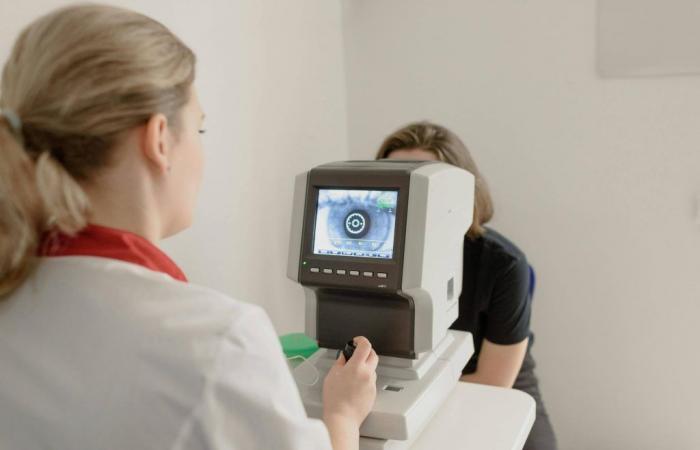Age-related macular degeneration (AMD) is a very common eye disease among people over 75: 20% of French people over this age are affected by a more or less aggressive form, not all of which require treatment. How can AMD be detected, slowed down or treated? An update from Dr. Hugo Bourdon, an ophthalmic surgeon in Toulon and retina specialist.
“AMD, he recalls, is characterized by abnormal and premature aging of the photoreceptors (light receptors) located in the central part of the retina, at the back of the eye. Intended for precise vision, this area is called the macula. When they disintegrate, the photoreceptors form clusters on the retina, the drusen, which correspond to the areas of blurred vision.”
AMD manifests itself by “the appearance of an opaque spot in the field of vision, called a scotoma and/or a distortion of vision associated with a decrease in visual acuity”. These symptoms are quite easy for the patient to spot himself, particularly using the Amsler grid test (see illustration above).
In addition to age, several factors increase the risk of developing this pathology, “among which heredity, but also oxidative stress caused by tobacco and the sun”.
Two forms of AMD
The ophthalmologist confirms the diagnosis with an examination of the fundus of the eye associated with an OCT (optical coherence tomography), a three-dimensional image of the macula.
“There are two forms of AMD, continues Dr. Bourdon. Dry AMD, also called atrophic AMD, is the most common. It progresses slowly, rarely leading to visual impairment. The wet form can appear suddenly or following an atrophic form: it progresses in fits and starts, more quickly. It is characterized by the presence of edema – absent in the dry form.
There is no treatment to regenerate the macula. In the case of dry AMD, the goal will be to slow down the progression of atrophy with hygiene and dietary measures. “A diversified diet, rich in beta carotene and omega 3 is recommended, says the doctor. There are dietary supplements, the effectiveness of which is questionable and which are not reimbursed. Sun protection for the eyes with category three or four glasses is strongly recommended, as well as smoking cessation for smokers.”
Wet AMD requires specific management and individualized treatment: “Intraocular injection of a drug temporarily reduces the swelling. It must therefore be repeated every eight weeks on average, knowing that this varies greatly from one patient to another and that there may be breaks in the treatment.” The objective is then, depending on the aggressiveness of the AMD, “to prevent or slow down the loss of central vision”.






